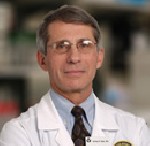 Almotamar.net Project Syndicate
Almotamar.net Project Syndicate - It is now a quarter-century since the acquired immune deficiency syndrome (AIDS) was recognized. The knowledge that has been gained since then has been breathtaking, and the pace at which basic research has been translated into lifesaving treatments is unprecedented.
The discovery of the human immunodeficiency virus (HIV) as the cause of AIDS was followed by elucidation of its pathogenesis, natural history, and epidemiology, the creation of a diagnostic blood test, and the development of antiretroviral drugs. In 1996, the approval of the first drug of a class called protease inhibitors led to the adoption of a multi-drug, anti-HIV regimen known as highly active antiretroviral therapy, or HAART. This advance dramatically transformed the quality of life and extended the life expectancy of HIV-infected individuals.
Moreover, antiretroviral drugs given to pregnant HIV-infected women and newborns have proven enormously successful in preventing mother-to-child transmission of HIV. As a result, since these combinations of drugs were introduced, at least three million years of life have been saved in the United States alone. We now have more than two dozen approved anti-HIV drugs and drug combinations, and a robust pipeline of next-generation drugs in various stages of development and clinical testing.
But nowadays our task is to apply these scientific and technological advances to delivering treatment and prevention strategies to people throughout the world, particularly those in resource-poor nations. Despite the successes in treating HIV/AIDS in the United States and other developed countries, it is clear that efforts to combat the pandemic must be scaled up in Africa, Asia, and other parts of the world where HIV/AIDS exacts its greatest toll. Indeed, an estimated 40 million people throughout the world are infected with HIV; nearly three million died of AIDS in 2006 alone.
Programs such as the Presidentís Emergency Plan for AIDS Relief, the Global Fund to Fight AIDS, Tuberculosis, and Malaria, and philanthropies like the Bill and Melinda Gates Foundation and the Clinton Foundation have helped make drugs available to treat 2 million people infected with HIV in lower- and middle-income countries. But fewer than 25% of the people in these countries who need antiretroviral drugs are receiving them.
With 4.3 million new HIV infections each year throughout the world, we face an untenable situation, as new HIV infections far outstrip our ability to treat all those infected. So improvements in our ability to prevent HIV infections from occurring are desperately needed.
A wide array of prevention strategies, including behavioral modification, distribution of condoms, and the provision of clean needles and syringes to intravenous drug users, has emerged. Recent studies suggest that adult male circumcision can be a promising prevention strategy, if properly and hygienically performed and accompanied by appropriate counseling and post-surgical care. Likewise, the ongoing development of topical microbicides offers the hope of empowering women to protect themselves from HIV infection when using condoms or refusing sexual intercourse is not feasible.
But the greatest scientific and public health goal in HIV/AIDS research still eludes us: the development of an effective HIV vaccine. This challenge has been particularly difficult because of the nature of the virus, particularly its ability to integrate itself into the genome of host cells, to readily mutate, and to conceal that part of its outer coat that would induce protective antibodies.
We also know that the bodyís natural immune response against HIV is inadequate in containing or controlling the virus. Indeed, since the discovery of HIV, there has never been a documented case in which an individualís immune system has ever completely eradicated the virus following established infection.
Many current studies focus on developing vaccines that might not completely prevent HIV infection, but that still could slow the progression of HIV or make a person less likely to pass the virus on to others. But our ultimate goal is to develop a vaccine that can prevent HIV infection. To succeed, we must solve the mystery of how to induce the human body to produce a protective immune response.
Despite the extraordinary scientific and medical accomplishments in the battle against HIV/AIDS so far, history will judge us by what we accomplish in the next quarter-century, and how we respond to the challenge of delivering the fruits of our research efforts to those who need them most.
Anthony Fauci is Director of the National Institute of Allergy and Infectious Diseases, part of the US National Institutes of Health. He advises the White House and Department of Health and Human Services on global AIDS issues, and on initiatives to bolster medical and public health preparedness against emerging infectious disease threats such as pandemic influenza. He was the world's 10th most-cited HIV/AIDS researcher from 1996-2006.
Copyright: Project Syndicate, 2007.
www.project-syndicate.org
